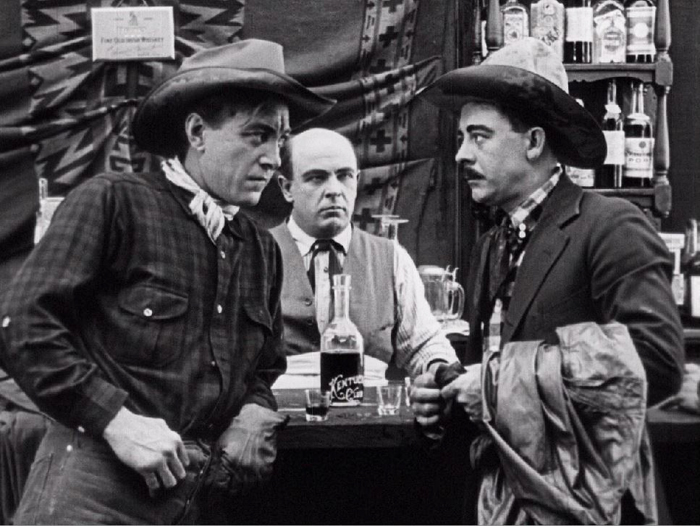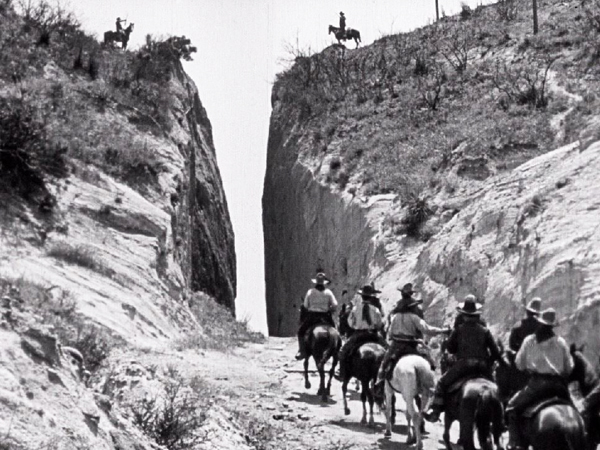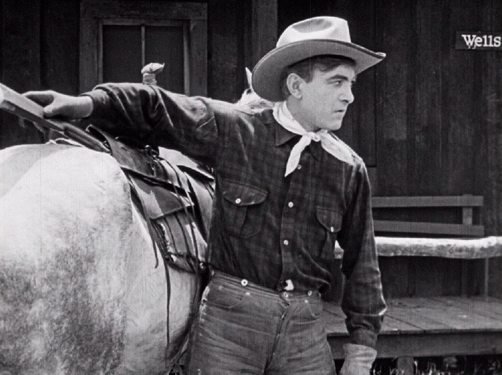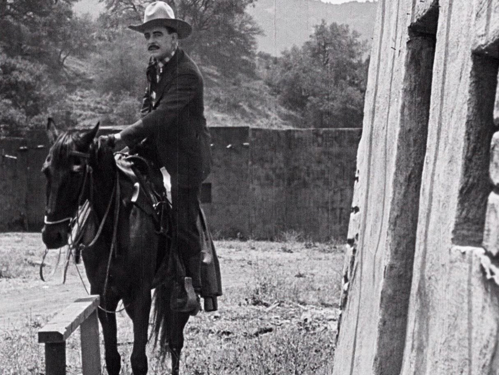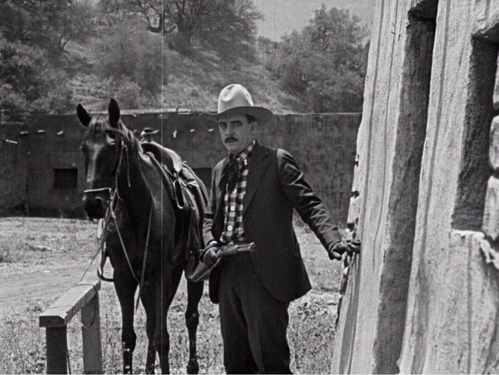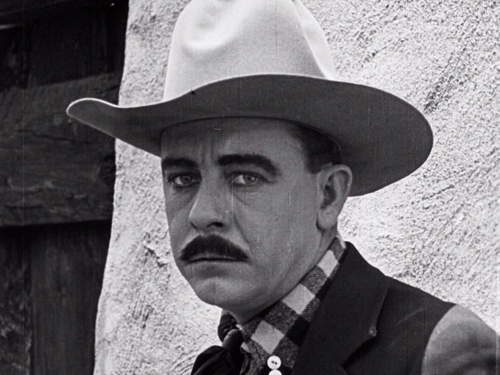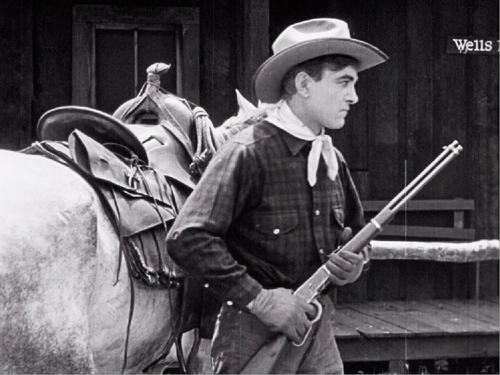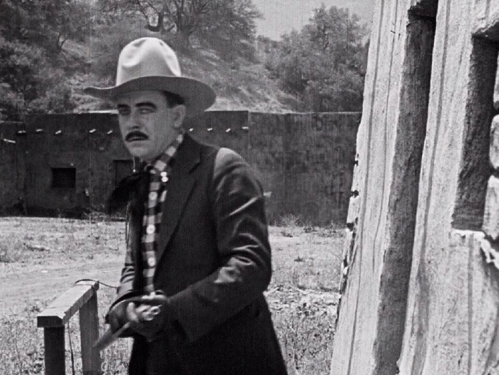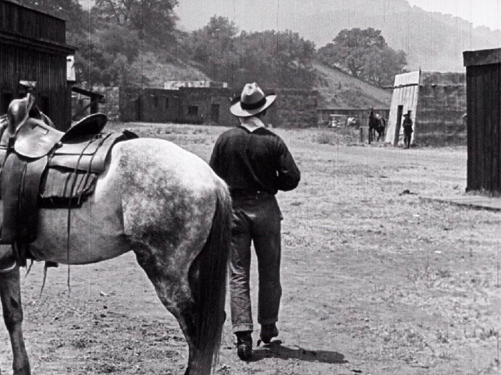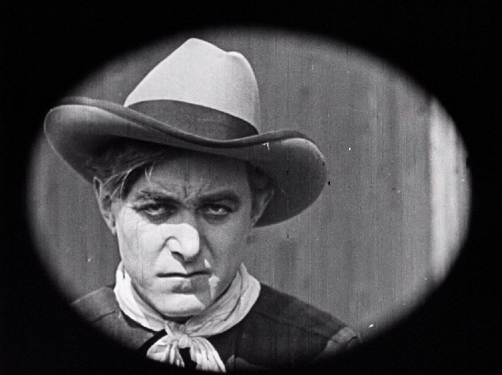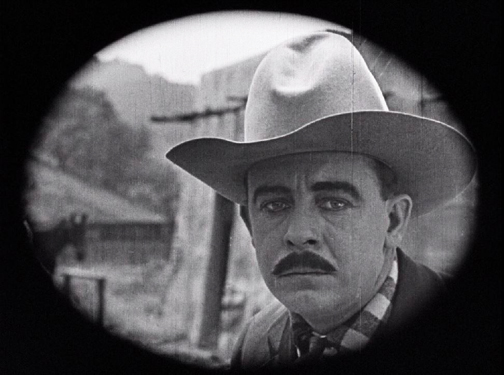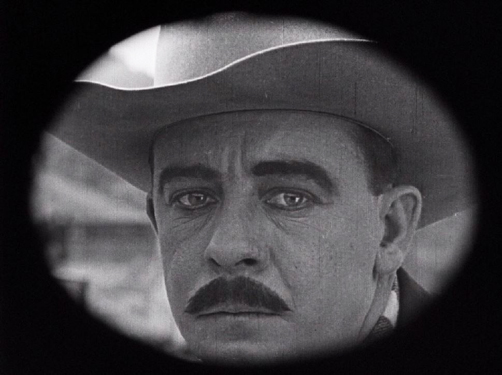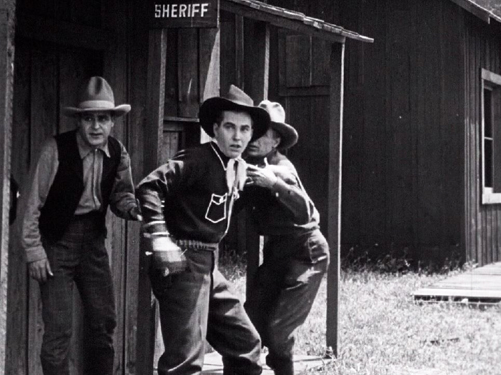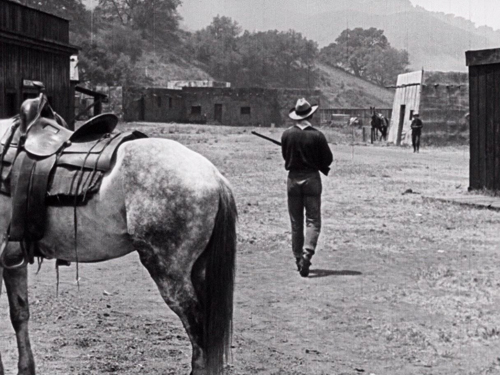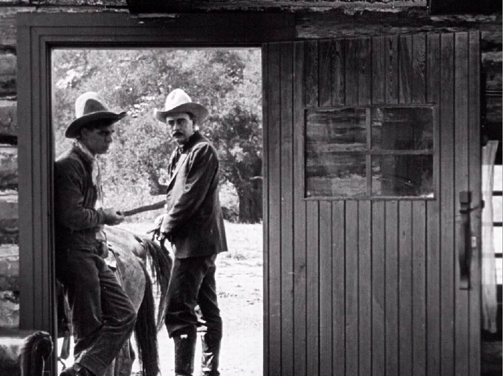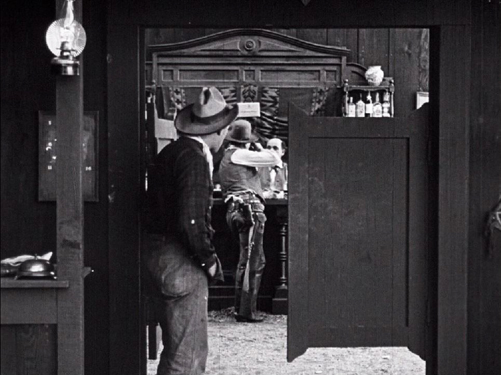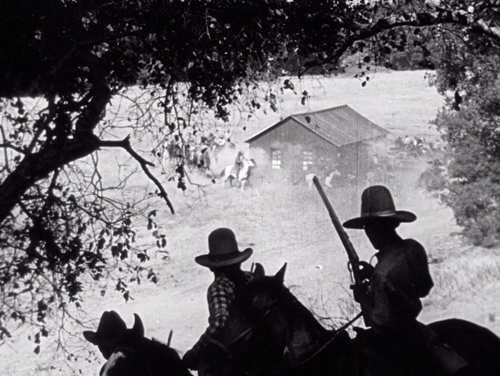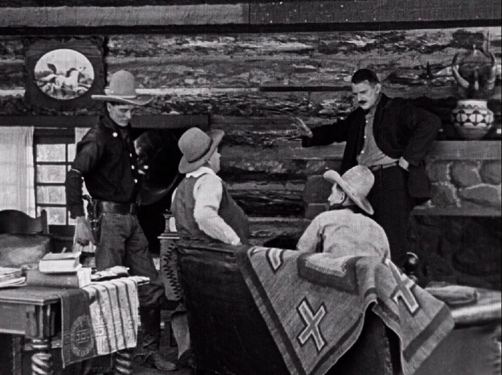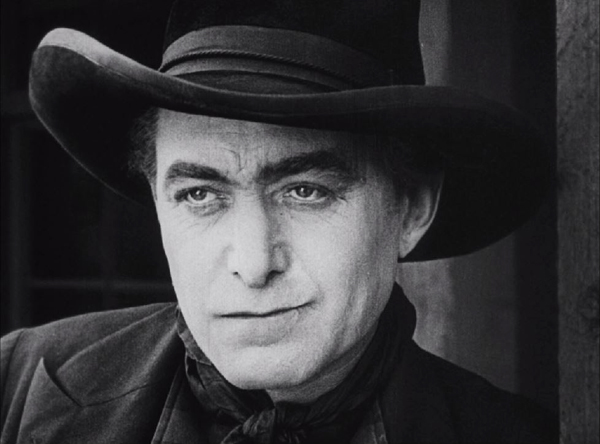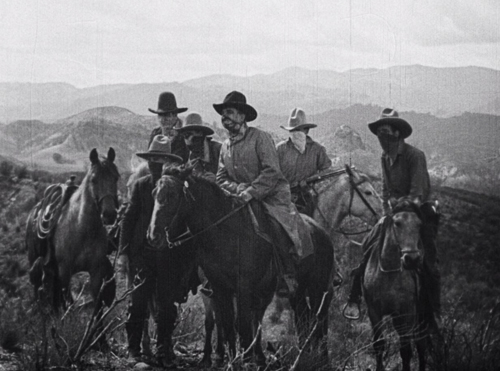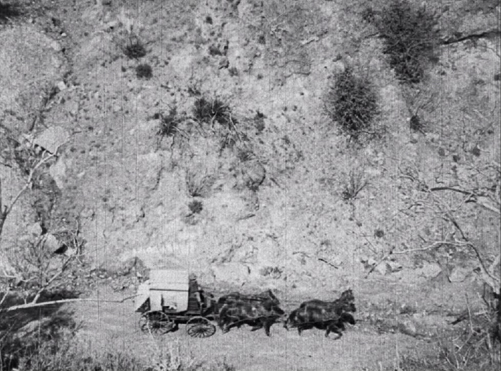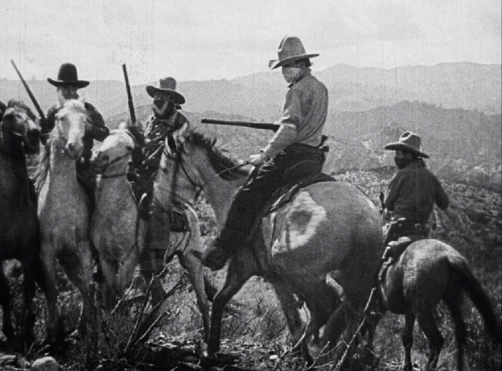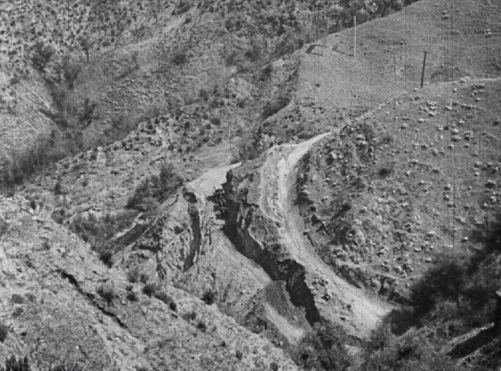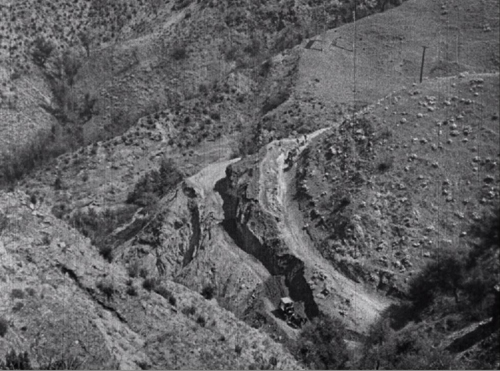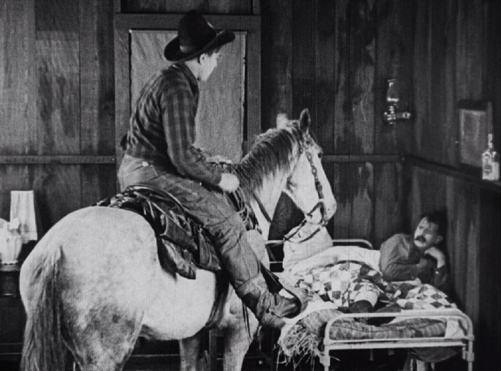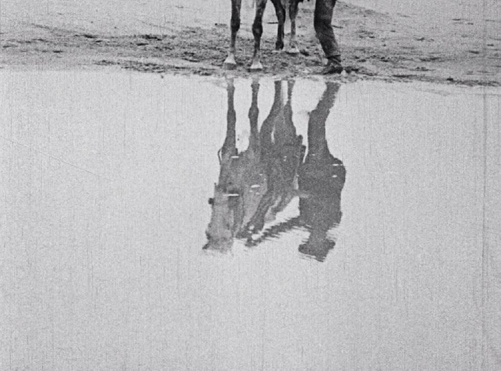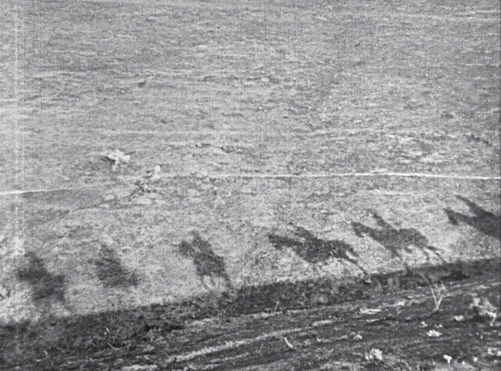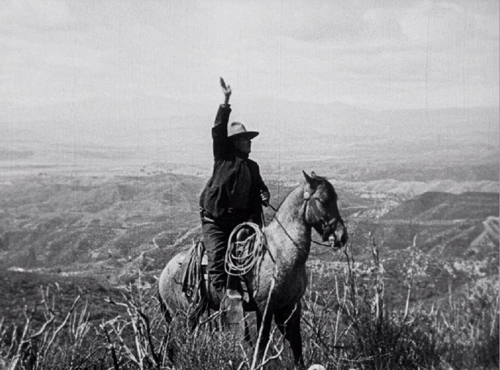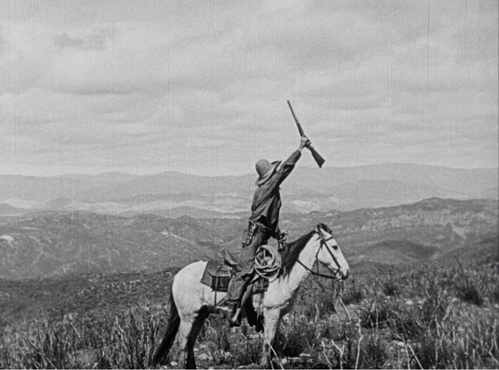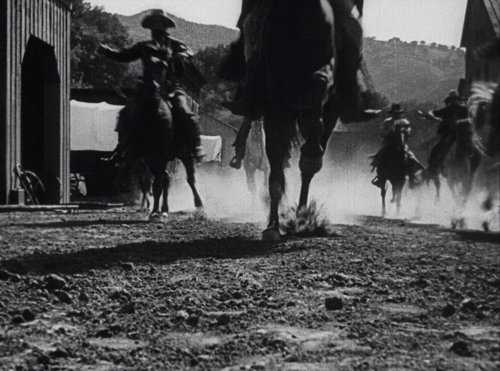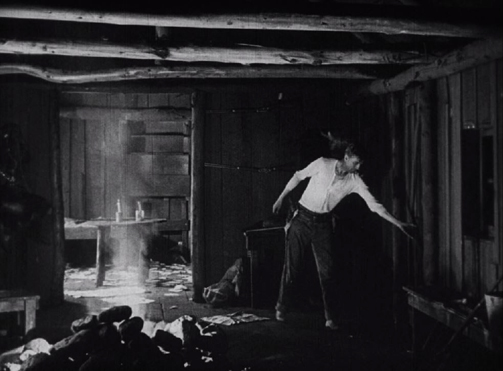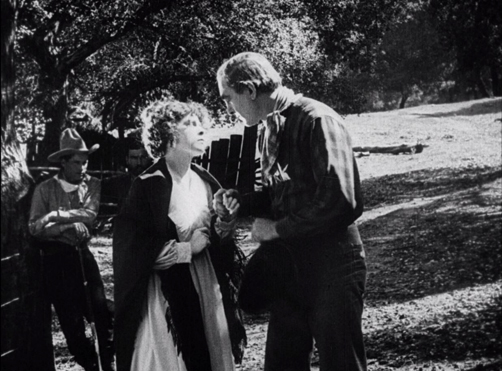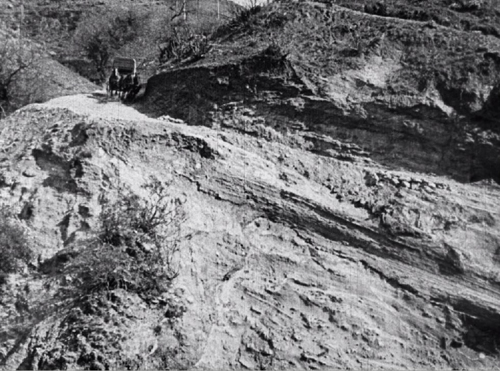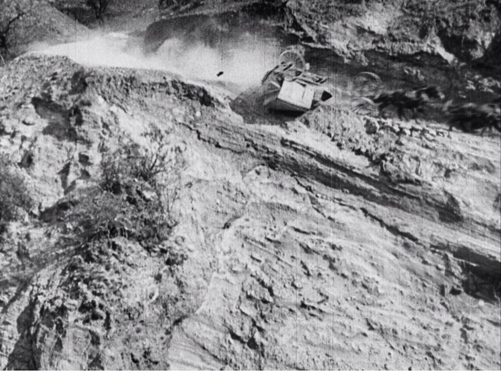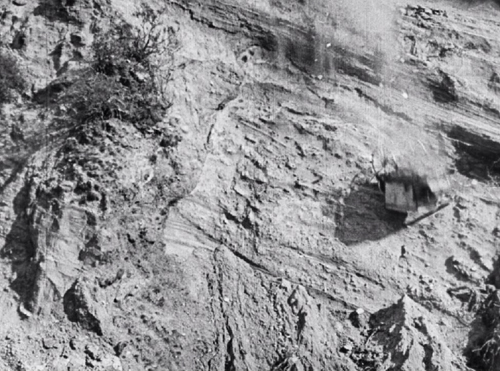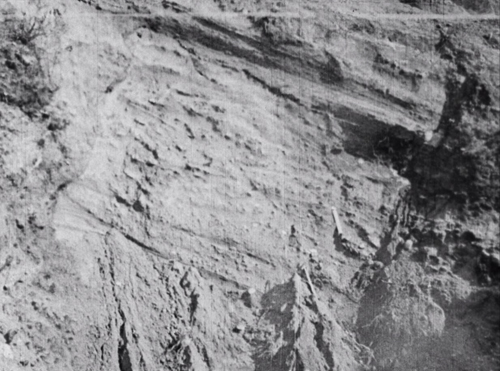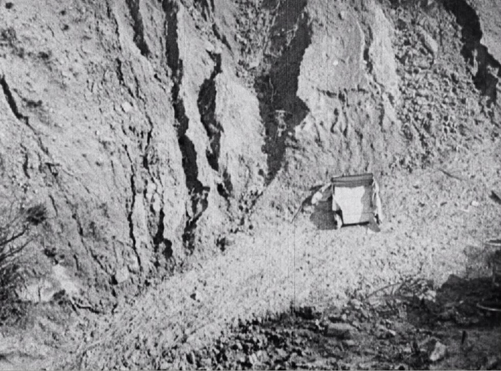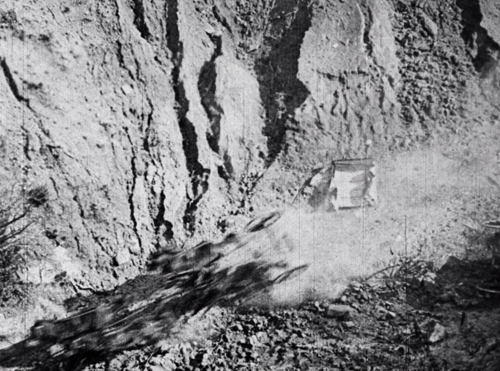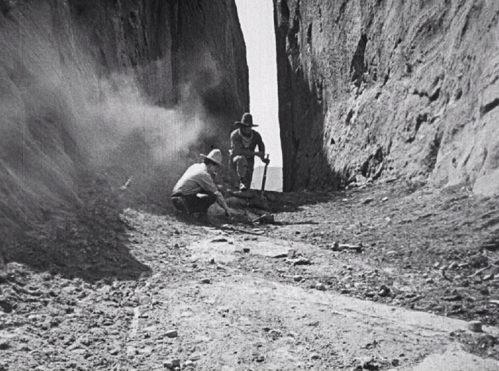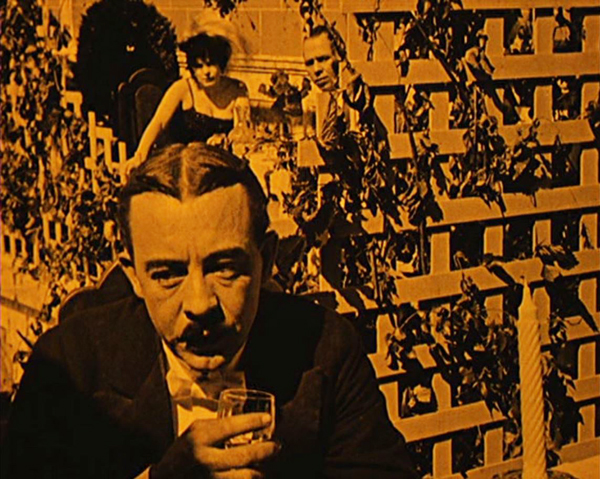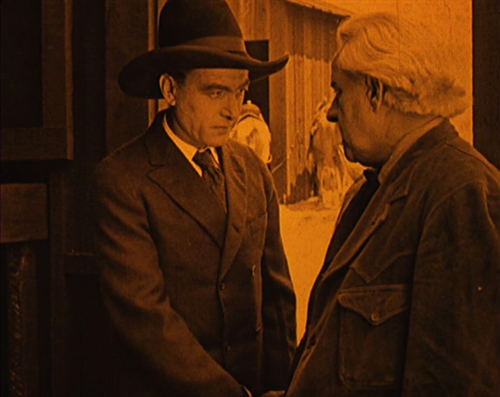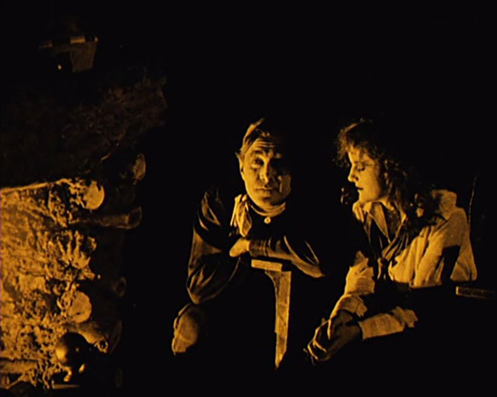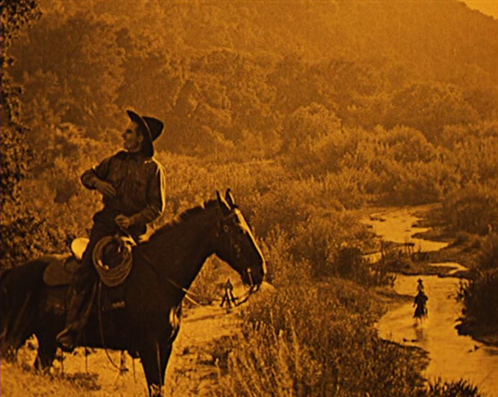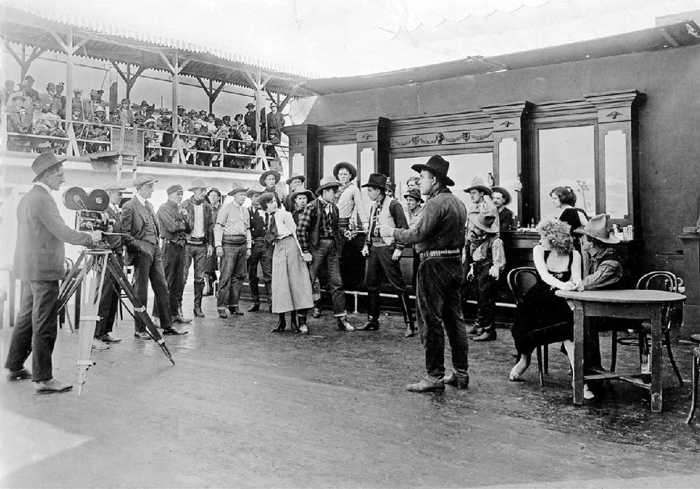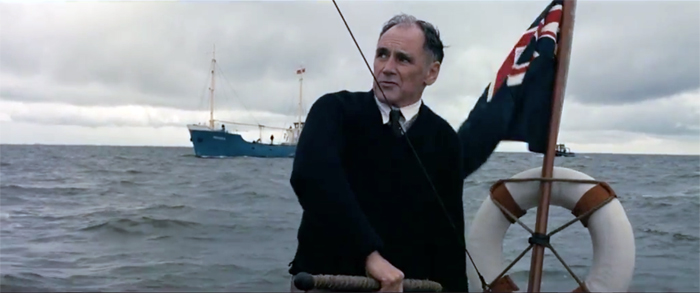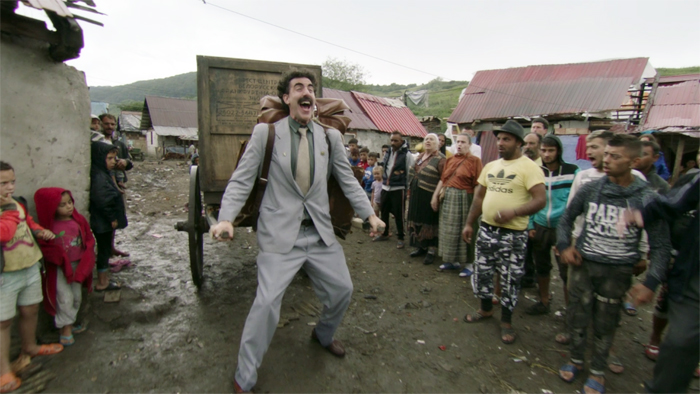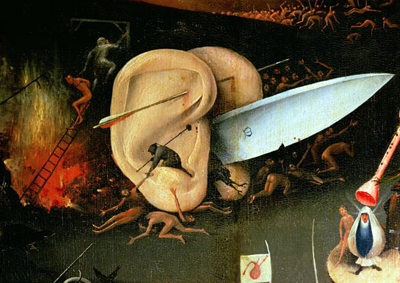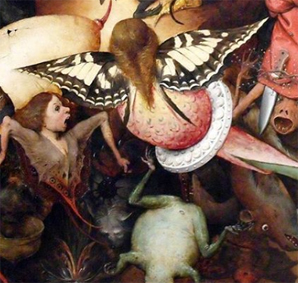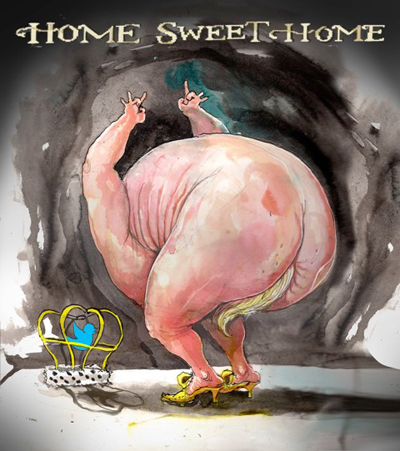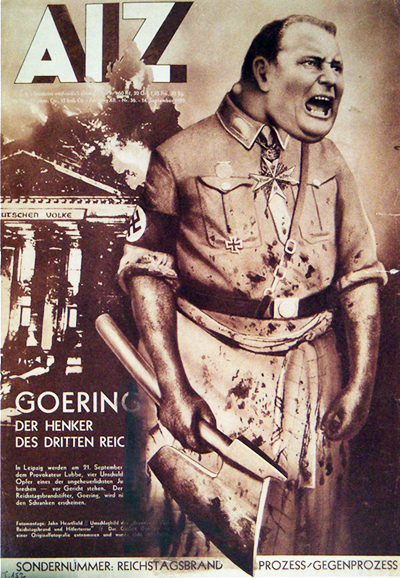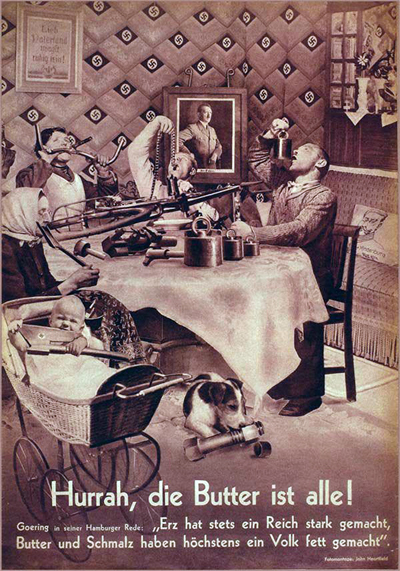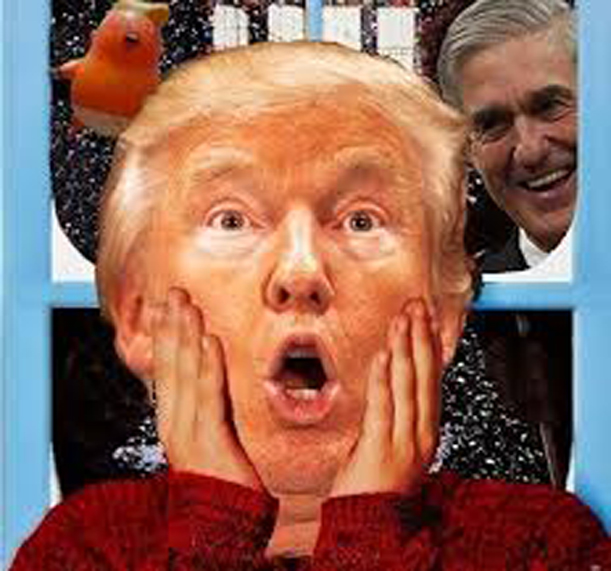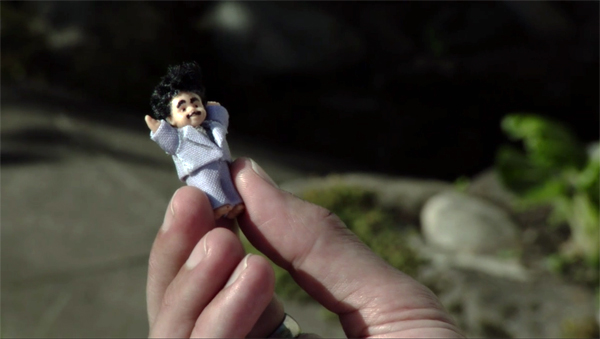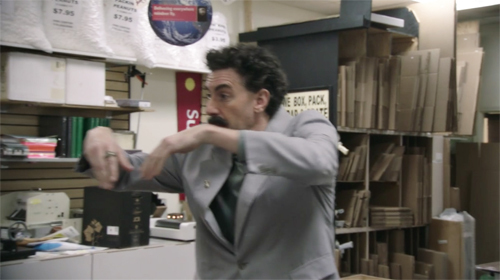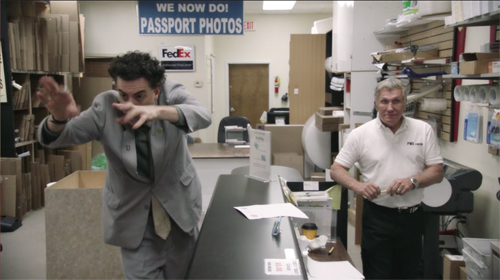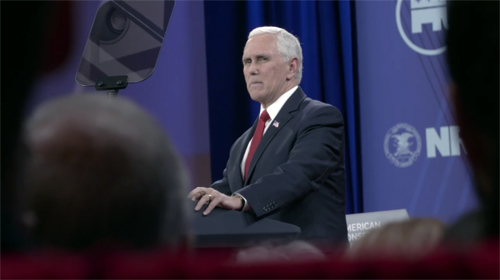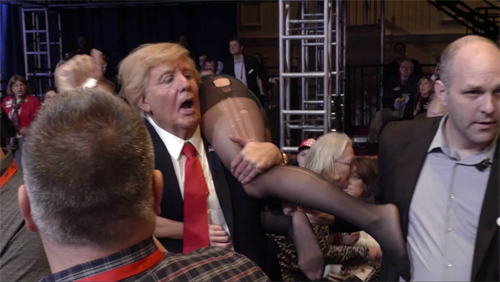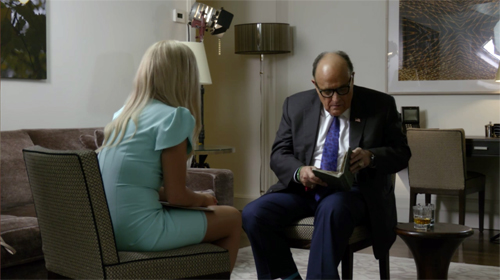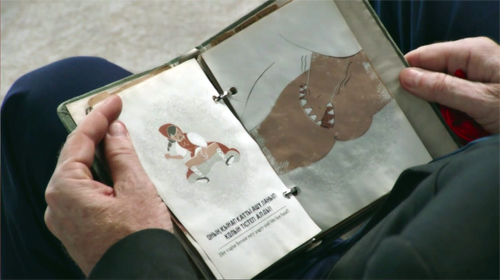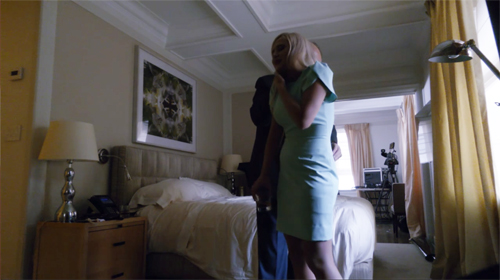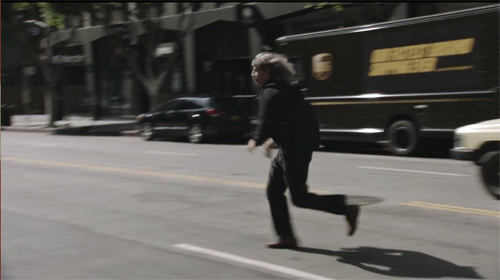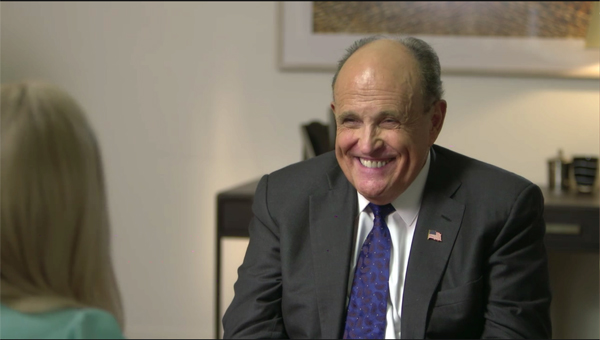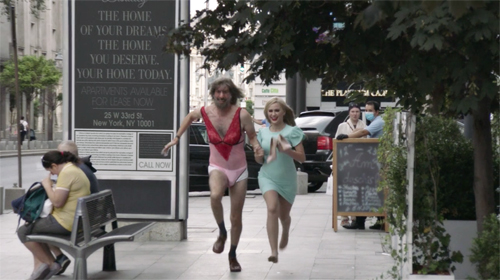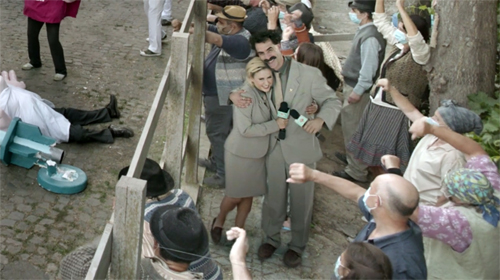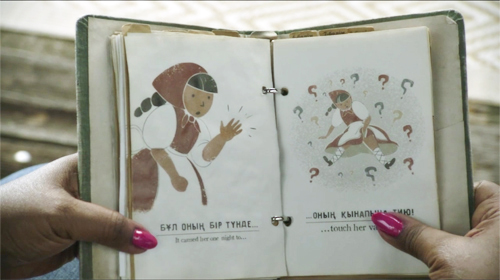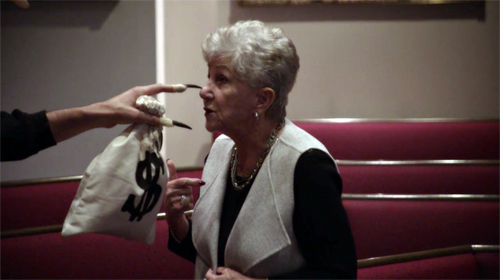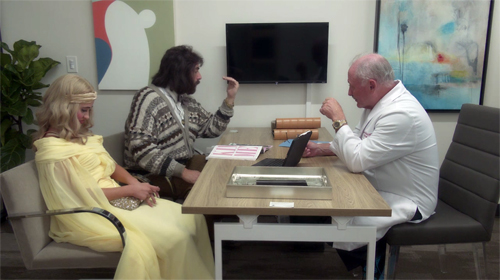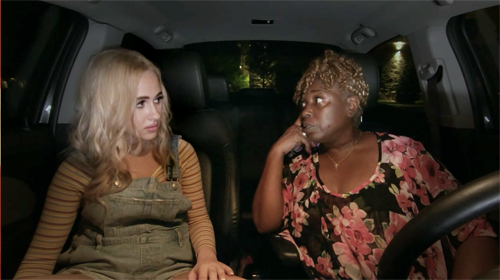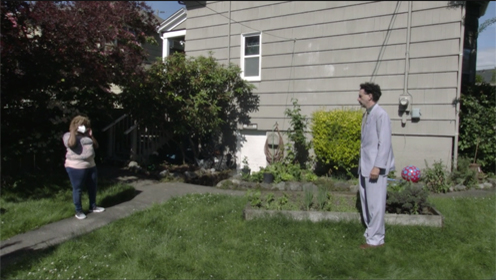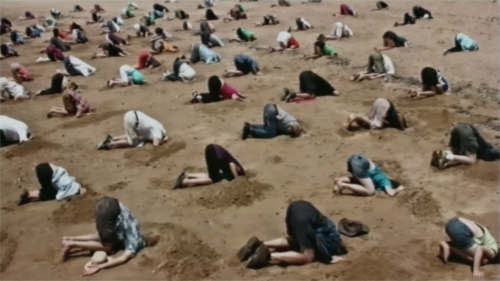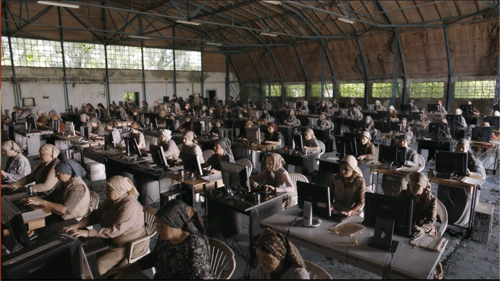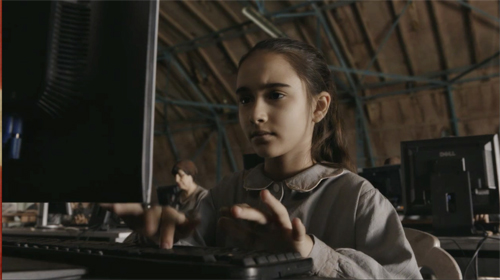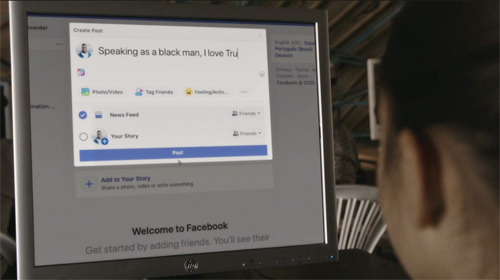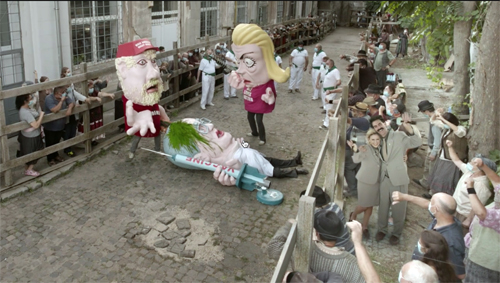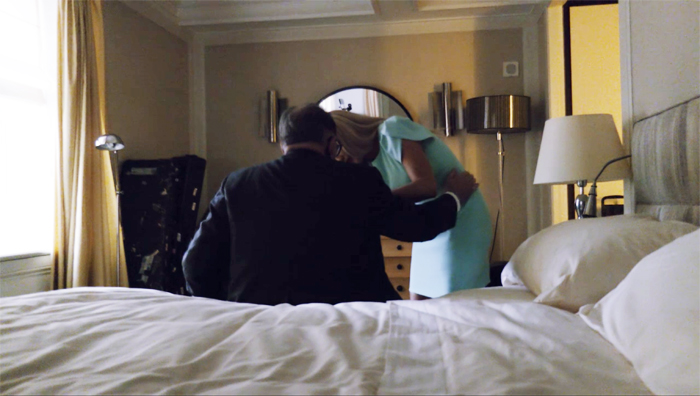Archive for November 2020
When John was Jack: Ford’s early westerns rescued
Straight Shooting (1917).
Kristin here–
Recently I received a most welcome message from cinephile extraordinaire Michael Campi, whom David first met at the 1995 Hong Kong Film Festival and with whom we have shared many a meal at subsequent festivals on three continents. His smiling face has shown up often across the history of this blog, most recently here. Michael was alerting me to the existence of a Blu-ray edition of John (aka Jack) Ford’s Hell Bent (1918). Kino Lorber released it on August 25, and as I discovered upon investigation, it had released a Blu-ray of Straight Shooting (1917) on July 14. A third feature, Bucking Broadway (1917) also survives, albeit in somewhat truncated form. (See below.)
Jack Ford, as he signed his films up to 1923, had made five two-reel westerns in 1917 before his first feature, Straight Shooting, followed by three other features that year. Harry Carey’s character, Cheyenne Harry, was popular, and Universal was clearly happy to have Ford crank out five-reelers starring Carey. (Stories of how Ford supposedly tricked Universal into “letting” him make a feature strike me as having been concocted well after the fact.) Cheyenne Harry was Carey’s main persona, but these features were not a series or serial. Carey is a different Harry each time, winning and marrying different women. When he departed from his good-bad man character, he took a different name, as with upstanding cowboy Buck in Bucking Broadway.
Even across these three films, the plots seem fairly formulaic, but the execution already displays considerable stylistic and technical sophistication. Ford had already mastered the continuity guidelines that had gelled over the previous years. Most of his films were shot in direct or diffused daylight, but he knew how to create an effective chiaroscuro with artificial light when a scene called for it. He often staged in depth to a degree that was unusual in that period. Particularly in Hell Bent he creates flashy scenes to show off his mastery of the cinema.
Both films survived only at the Národní filmovy archiv in the Czech Republic. (Go here for a remarkable list of major international classic films which have survived only because there were unique prints of them in this archive.) That chance survival is very lucky for us. Ford is credited with making 32 films from 1917 to 1919 (fifteen in 1919 alone, though some were shorts). Only three survive in anything close to complete form, and a few brief scraps have come down to us as well. These new releases and an earlier one make all three available in the best prints out there.
Straight Shooting
Straight Shooting is the earliest and arguably the best of the three. Its story is tight and develops continually, without the padding noticeable in Hell Bent and Bucking Broadway. The plot of the ranchers trying to drive out the settlers runs through it consistently and holds it tightly together. Straight Shooting also sets the pattern of making a romance line of action prominent in the plot. In both Straight Shooting and Hell Bent Harry begins as a criminal and reforms when he falls for the virtuous heroine. In Bucking Broadway, another common pattern is used. As a cowhand on a ranch, Harry woos and wins the hand of the rancher’s daughter, only to lose her to a slick visitor from the city who persuades her to elope with him to New York. Naturally he turns out to be a scoundrel, and she needs rescuing to return to the little house Harry has built for his bride.
To some extent, these patterns are taking up conventions of William S. Hart’s films, though Harry is a more easygoing, comic character than the solemn, stalwart heroes Hart tended to play.
Already Ford displays his remarkable mastery of the medium. The famous shoot-out scene is handled with an unusual panache. After Harry comes out of a building and sees Fremont riding toward him, he unsheathes his rifle. A reverse shot shows Fremont dismounting and doing the same.
In the same shot, Fremont moves forward, leading to a tighter reverse shot of Harry, waiting.
A tighter reverse shot of Fremont follows, leading to a repetition of the original framing as Harry moves rightward.
The original framing of Fremont is repeated as he responds by moving leftward. A long-shot in depth (emphasized by the placement of the horse in the foreground, shows the two men in the same space, establishing the distance between the two but also setting up the building on the far right that Fremont will duck behind, leading to a cat-and-mouse game that forms the last part of the shoot-out.
A tighter shot-reserve shot places the two men in irises. Harry moves toward the camera.
Fremont moves forward as well and comes even closer to the camera than Harry does; the camera also lingers on his face longer than on Harry’s. These close views of Fremont place considerable emphasis on his fearful expression in comparison with Harry’s determination. This fear sets up the moment when Fremont ducks behind the building.
A cutaway to some onlookers ducking into the alley at the rear builds suspense but also shows that the sheriff is too scared to interfere (as he had been in an earlier scene in the bar).
In the repeated depth framing, the two men walk slowly toward each other. More cutaways show frightened townspeople ducking into hiding. Harry and Fremont walk past each other without firing , which adds an unconventional little twist to the scene, and Fremont suddenly hides behind the building.
Although a high point, the shoot-out is not the only indication that Ford was born to make movies.
His use of natural locations was distinctive from the start. He may have already been using Beale’s Cut, the narrow passage in the frame at the top of this section, in his short films. (Other filmmakers, such as Keaton, shot there as well. Tag Gallagher’s video essay on the disc runs through a few of them.) This formation appears relatively briefly in Straight Shooting, but Ford used it more extensively in Hell Bent. It may have been the Monument Valley of Ford’s early career.
His penchant for doorways has appeared by this early point. On the left, the young cowboy Danny and Fremont pass in the door of the villainous rancher Flint’s house. On the right, the bar doorway is combined with considerable depth as Harry arrives to announce that he is quitting the gang.
Depth is used in natural settings as well. The ranchers’ attack on the farmhouse includes a dramatic composition with horsemen shown in near silhouette against the distant house, visible through a cloud of gunsmoke and dust. At the right, the staging of a meeting in which Flint discusses strategy with his henchmen has the furniture in the foreground, with the placement of the sofa forcing two of the men to face away from the viewer, creating a naturalistic touch. By the way, compare the diffused lighting and set design, with its ceiling beam, with a nighttime scene at the villain’s lair in Hell Bent, below.
Most Ford fans are probably familiar with Straight Shooting, albeit in inferior prints. Before I pass on to the lesser-known Hell Bent, some information about the Kino Lorber version.
According to Tag Gallagher’s essay in the accompanying booklet, the Nederlands Filmmuseum used a copy of the Czech print to create a tinted version. The Museum of Modern Art also made a version from the Czech print; its head title and credits copy the design of Universal intertitles of the period. That print, presumably the one I saw years ago, translated the Czech titles. The Kino Lorber print is a 2016 restoration by Universal, which adopts the MoMA credits but uses title text drawn from an early continuity script of the film. I must agree with Gallagher that the decisions to use those titles and not to tint the print were correct. As the image at the top of this entry shows, the result is a huge improvement on previously available versions.
Apart from this booklet, the supplements also include a brief video essay on Ford’s early career by Gallagher, an audio commentary by Ford scholar Joseph McBride, and a three-minute fragment of Hitchin’ Posts, which is all that is known to survive of Ford’s 1920 film.
Hell Bent
We first saw Hell Bent when it was screened at “Le Giornate del Cinema Muto” festival in 1988. Although the surviving Czech print was missing over twenty minutes of footage (near the beginning and especially the ending as far as I could tell), it was another impressive revelation of Ford’s very early work. It was also quite worn, more than Straight Shooting, it would seem, since even a comparable restoration by Universal could not quite replicate the visual quality of the Straight Shooting Blu-ray. Still, it is again a big improvement.
The plot of Hell Bent is considerably less well constructed than that of Straight Shooting. Early in the film there is an impressive stagecoach robbery sequence that sets up the criminal gang, led by Beau Ross, that Harry is initially linked to as a sometime hit-man. The robbery in fact fails, as the expected Wells Fargo cash-box has been secretly sent by by wagon taking a different route. Nothing comes of that immediately.
The opening of the robbery scene displays Ford’s expertise in both editing and dramatic cinematography. The scene begins with the gang high on a hill looking off expectantly. A POV long shot reveals a stagecoach passing below.
The group turn and begin to ride off left. There follows an extreme long shot of a winding road with the stage moving up the lower part of the road.
We see the bandits riding rapidly down a steep slope. Finally the stagecoach is seen in the same framing as before, now further along, and moments later the gang appear at the upper right around the bend, galloping to intercept the coach.
After the failure of the robbery, there is little plot development in the first half of the film. There’s a long comic scene as Harry arrives in town and finds all the beds in the local saloon/dance hall occupied. He rides his horse up to the room with a single occupant who has refused to share his bed. Harry demands that he do so, and the two take turns forcing each other to jump from the window until they end up drinking together and becoming chums. (The bar here may well be the same set as that in Straight Shooting redressed. Bars apparently played a large role in Ford’s films, not only in these scenes but also in the production still at the bottom of this entry.) Teaming up with another cowboy gains Harry an ally in later in the action, but their initial encounter is quite drawn out.
As in Straight Shooting, Harry falls in love and reforms. (We witness the process of him contemplating the benefits of a settled domestic life in the close-up at the top of this section.) The second half becomes more goal-driven, with Harry leading the effort to defeat Ross’s gang.
There is no sustained action that is as flashy as the gunfight in Straight Shooting. Still, Ford seems even more determined to flaunt his prowess as a director. He gives us our first view of our hero as a reflection in a pond. He shows horsemen as shadows in a shot that prefigures a similar device in the Indian attack in The Iron Horse (1924).
The beginning of the climactic attack on the stagecoach begins with Ross signaling to his men on distant hilltops to converge. This is handled with excellent graphic matches of Ross, his henchman, and back to Ross. A short time before, as the gang rides out of town, they are filmed so that the horses gallop toward and jump over the camera.
Most of the interiors were shot on stages at Universal with muslin diffusers draped overhead to create an even, overall light. The image at the bottom of today’s entry shows this setup for another Harry Carey film by Ford. Incidentally, it also shows an audience watching the filming. Ford again creates chiaroscuro, this time more elaborately, for Ross’s house. There is a ceiling of log beams with something over them to block out the light. The distant room is lit more brightly than the foreground one, which is lit only by a fire (presumably simulated with one or more arcs) in the left foreground. For some of the more static exteriors, Ford has the camera shooting obliquely toward the sun, creating considerable modeling on the characters.
Although, as I said, there is no big final scene, there is a jaw-dropping shot during the gang’s pursuit of the stagecoach in the climactic sequence that demonstrates how thoroughly Ford had already grasped the powers of mise-en-scene and the camera. Although the scenery looks quite different from that of the high-angle extreme-long shot of the winding road earlier, I’m fairly sure that this is the same road, shot from a different vantage point, more or less where the gang had been waiting in the earlier scene. If not, it is certainly somewhere similar nearby, with a hairpin road on the side of a mountain.
The stage initially comes forward from the distance at the upper left (the area where the gang had come from when they appeared in the final shot of the sequence reproduced above). As the horses round the curve and race down toward the right, the coach breaks lose and begins to fall over the edge.
The camera tilts to follow it, but after it falls out of sight at the bottom, the tilting movement pauses, not continuing with it until it crashes offscreen.
After this pause, the tilt resumes, revealing the crushed coach at the bottom of the cliff. The reason for the pause in the tilt becomes apparent: offscreen the horses have rounded a bend and now come unexpectedly racing through the shot, past the coach. The camera had paused, waiting for the timing to be just right to catch them. I believe that someone who could figure out the logistics of that action and that camera movement had a pretty good feeling for cinema from very early on.
In addition to this dramatic mountain road, Ford uses Beale’s Cut in multiple scenes, making it the location of the gang’s hide-out.
Hell Bent was also restored by Universal from the Czech print. There’s no booklet with this one, but Gallagher again provides a second, different brief video essay. The other supplements consist of another commentary by Joseph McBride, as well as a 1970 interview he did with Ford.
Bucking Broadway
Watching the two Kino Lorber releases, I was reminded that a third Ford feature of this era also survives–though, like Hell Bent, it is missing footage, probably about the same amount, given the running lengths. Bucking Broadway was one of eight features by Ford released in 1918. His ninth feature, it also stars Harry Carey, this time as Buck. The plot is thin, with Harry as a cowhand who falls for the rancher’s daughter and is given his blessing to marry her. She elopes with a man from the city, who does intend to marry her but turns out to be a drunkard and lout. Harry and his cowboy friends come to New York and rescue her.
Even more than Hell Bent, the film seems like a two-reeler stretched to five. Harry’s engagement party involves a comically maudlin scene the cowboys picking out “Home, Sweet Home” on a piano and bursting into tears as they sing along. The final rescue and fight are expanded to create some comedy about cowboys riding their horses through the city, and the final brawl seems barely staged and way too long.
Nevertheless, there are flashes of Ford’s skill at intervals, with his door motif recurring as a site for the rancher to mourn his daughter’s departure and a scene by a fireplace using the stark low-key lighting popularized by The Cheat three years before.
There are plenty of depth shots like this one, as the cowboy in the foreground calls the others to gather and we see three of them in the distance. See the top of this section for an unusually flashy depth shot as two friends of Buck watch the villain getting drunk in the close foreground.
There are none of the virtuoso treatments of editing, landscape, and camera movement that characterize the other two films of this era, but any Ford completist will want it. After all, it comes as a supplement to The Criterion Collection’s DVD and Blu-ray releases of Stagecoach. It includes a charming musical accompaniment by Donald Sosin, whose piano and violin playing (often simultaneously!) has enlivened many an Il Cinema Ritrovato screening.
The photograph below was borrowed from Tag Gallagher’s video-essay supplement on the Hell Bent disc.
Beale’s Cut is not a natural formation. As the name suggests, it is a man-made passageway created in the 1850s and 1860s as a convenient route into and out of nearby Santa Clarita (just north of the San Fernando Valley). It still exists, though comments on Google Maps suggest that, being located on land belonging to an oil finery, it is fenced off, partially collapsed, and full of trash. For a brief account of its sad decline, see here. There are many historical photos of it online.
Shooting an unidentified Ford-Carey movie at Universal City’s stages.
1917 and DUNKIRK: A conversation
1917 (2019).
DB here:
For over twenty years, the Willson Center for Humanities and Arts at the University of Georgia at Athens has hosted Cinema Roundtable, a series of film screenings and discussions. Covid-19 hasn’t stopped them from keeping it going, and they kindly invited Kristin and me to visit, virtually, and talk about two war films. The title is “Wartime Suspense in ‘Dunkirk’ and ‘1917’: A Conversation with Kristin Thompson and David Bordwell.”
We discussed aspects of style and genre. Many participants, notably Professor Tanine Allison of Emory, brought up other points about these two intriguing movies. It was also nice to see some old friends from Wisconsin logging in.
The entire session is on YouTube.
We enjoyed participating and thank our hosts, Dick Neupert and Dave Marr. In preparing for the session, I think it’s fair to say we liked both films better on rewatching them.
And no, we haven’t yet seen Tenet. Health precautions keep us at a distance. But we are keen, and when we can write about it, we will.
In a piece of good timing, Tom Shone’s book The Nolan Variations came out three days before our session. It’s excellent and offers the most comprehensive overview of this director’s achievements.
Our e-book on Christopher Nolan is available for download here. (Thanks to those Willson attenders who picked it up!) There’s some background on the book here. Our various blog entries on Nolan’s work are here.
Dunkirk (2017).
Borat: Keep it stupid, simple
Borat Subsequent Moviefilm: Delivery of Prodigious Bribe to American Regime for Make Benefit Once Glorious Nation of Kazakhstan (2020).
DB here:
Defending some of his wildest films, Hong Kong director Tsui Hark pointed out: “Sometimes it’s fun to be stupid.” True enough. But we need to be stupid in sync. When a leader is being stupid and only some of our fellow citizens are, it’s a lot less fun.
The situation invites you to respond with meta-stupidity: Showing how invincibly stupid others are being by doing something stupid yourself. One option is silly satire (Saturday Night Live), but there’s a more deeply disturbing alternative. You can be stupid in a savage, no-holds-barred way.
This can disturb your audience. Shock defeats geniality, obliterates wit. You get called heavy-handed, on-the-nose, over-the-top, and other hyphenated things. You may even move into the realm of the grotesque.
Blunt, tasteless, outrageous grotesquerie has been an important artistic strategy through the millennia. Bosch (below), Bruegel (next), Goya, and other artists have taken exquisite pains to present giddy images of human folly, bursting the limits of taste and sense.
Unsurprisingly, in America the grotesque flourished during the 1960s, in Robert Crumb comix and Paul Krassner’s Disney orgy. Nowadays, Australia’s David Rowe has done fastidious work with slack jaws, skin blotches, and, inevitably, flab.
The realm of the stupid grotesque is one that Sacha Baron Cohen has made particularly his own. It suits our moment.
Friction between parts
The Republican Party’s steamrolling takeover of civil society, begun in earnest in the 1980s but turbocharged under Trump, has created a Golden Age of American agitprop. Responding to the lava flows of vile, vacuous sludge on social media, carefully crafted counterstrikes have shown a fair bit of wit. Call it the spontaneous genius of the American people. That usually comes down to jaunty disrespect.
Caricature is the go-to format for those who can draw. But it’s striking that the photomontage techniques of John Heartfield, aimed at an earlier Reich, have been revived for the Age of Trump. Below, Heartfield’s 1933 portrait of Goering as butcher of the Reischstag, alongside an ailing Trump.
Photoshop makes the craft of photomontage easier than in earlier eras, but the trick is still to have an ingenious idea–a play on words, or a reference to a meme. Heartfield’s famous “Hurrah, the Butter’s All Gone!” defiles the guns-vs.-butter motto of classical economics by suggesting that we’re foolish enough to think we can survive on instruments of death. It also quotes Goering’s speech: “Iron has always made an empire strong, butter and lard have, at best, made a people fat.” While suggesting that Hitler’s followers have a hearty appetite for self-destruction, Heartfield has shrewdly created metaphors: handlebars like a corncob, a bandolier like spaghetti, a bomb like a coffeepot, a grenade serving as a doggy’s bone. The baby teething on an axe-blade is a bonus, as are the sprightly swastikas in the wallpaper.
In the gentler example, Trump isn’t just any baby, he’s the kid in Home Alone (covert reference to his cameo in the sequel), with the invaders as both the Blump and, for once, a smiling Bob Mueller.
Note that these aren’t deepfakes, undetectable blends. Montage promotes friction between parts. The juxtaposition bears the traces of the act of bringing disparate pieces together. (Trump’s hands are plausibly small, but that icebag is an awkward fit.) The pieces create a coherent spatial layout, but there’s enough mismatch to remind you of the act of assemblage.
Of course montage is also a film technique, and sometimes–as with the Soviet films of the 1920s, or found-footage films like those by Bruce Conner–we sense a jolt or abrasion between shots. By and large, though, a film like Borat Subsequent Moviefilm: Delivery of Prodigious Bribe to American Regime for Make Benefit Once Glorious Nation of Kazakhstan is less an exercise in montage (despite all its jump cuts) than a faux-documentary mixing the casual norms of prosumer video and quickie tabloid-crime cable fodder.
Instead of the relatively softball treatment of POTUS seen in my images, Borat Subsequent Moviefilm gives us something much closer to Heartfield’s blood and bombs. As in a photomontage, bits of reality are turned into a cartoon that’s outrageous, even offensive. But like Heartfield, Baron Cohen reminds us of one crucial point. Fascism promises to make stupidity fun.
Just another movie?
Spoilers ahead, of course.
The grotesque is usually associated with deformation, but Borat Subsequent Moviefilm has a firm structure. At the risk of sounding silly, I insist that it’s a surprisingly tightly-knit classically conceived film.
The hero starts off with a goal. Ex-journalist Borat Margaret Sagdiyev will get a reprieve from penal labor if he will deliver Johnny the Monkey as a bribe to well-known “pussy hound” Mike Pence. Borat’s daughter Tutar joins Borat in the US by smuggling herself into Johnny’s cargo crate, and because she has eaten Johnny, she must replace him as Pence’s bride.
The film falls into the familiar four parts. The setup introduces Borat’s goal and peaks at the invasion of CPAC. As usual, the development section that follows redefines the initial goal. Turned away by Pence’s guards, Borat gets his boss’s permission to offer Tutar to Rudy Giuliani instead. This goal forms the through-line for the rest of the film, as Borat undertakes to make over Tutar into a submissive American woman.
The third section is occupied with various delays and stretches of character change. Tutar starts to liberate herself from Kazach patriarchy and Borat comes to accept his daughter as a person. At the climax, when Tutar decides to offer herself to Giuliani to save her father, he races to rescue her–prepared to sacrifice himself to save her from violation. The epilogue celebrates a new stability with a happy ending, if a worldwide pandemic counts.
The main thread is the familiar device of the naive traveler, the alien who reminds us of how strange our everyday world can seem to an outsider. Borat is introduced to smartphones (though he never figures out the camera), cyberporn, plastic surgery, QAnon, and Covid-19. Tutar learns that her vagina will not chomp her arm, that women can drive cars, and that fathers can walk hand in hand with their daughters.
As in a traditional film recurring motifs–raw onions, a chocolate cake, a plastic baby, strings in the brain–bind the scenes together. Stylistically, the apparently offhand shooting displays classic camera ubiquity. We always have the best view because multiple setups are covering the action (something not common in a true documentary), and probably scenes are retaken. Matches on action are the giveaway.
Many of the scenes, particularly those involving crowds at right-wing events, are made to cohere through the Kuleshov effect. Editing allows Pence to appear to react (stonily) to Borat’s appearance in a Trump fatsuit at the back of the hall.
Think Rudy really inspected these pages of Tutar’s book? He is very moved by receiving it.
And there’s a nice homage to Griffith-style crosscutting, when Borat scrambles to rescue Tutar from the clutches of America’s Mayor.
I grant that Borat Subsequent Moviefilm seems pretty episodic when you watch it, but I suspect that’s partly because of the inherent looseness of a road-movie plot, and partly because of the shock effect of individual scenes. That shock depends, I think, on the relentless grotesquerie on display. Classical clarity of presentation enables the film to chart two major types of stupidity at large in our world.
Leering in bestial degradation
The aesthetic of the grotesque centers on fanciful but disturbing deformation, an exaggeration that’s at once playful and threatening. Art critic John Ruskin, describing the carved heads he found on the Bridge of Sighs in Venice, was appalled to see them “leering in bestial degradation.” That’s not a bad description of Borat Subsequent Moviefilm. The operative word, of course, is leering. The grotesque, as James Naremore points out, mixes fear, disgust, and laughter.
The grotesque breaks categories. Borat’s main disguises as a spare-tired redneck make him implausibly cartoonish. Animals become human (Johnny the chimp is a porn star) and humans become animals, or simply raw material. The producer of Borat’s previous film has been turned into an armchair, with privates preserved.
Species transmogrify. Borat himself–hugely tall, loping like a moose, shitting in front of Trump Tower, with his inane grin and wobbly vocal pitches, high-fiving with hands like seal flippers–is a walking graffito, something you might see scrawled on a remote East European grotto. Tutar, like all Kazakh daughters, is kept in a cage. Grotesque art also breaks taboos. The film wallows in menstruation, incest, masturbation, animated POTUS erections, kinky birth stories, and sex toys, including a gag that pivots on Borat’s accent (Amazon delivers “fleshlights” instead of flashlights). In this context, Rudy Giuliani’s 1200-watt smile becomes wolfishly sinister.
Again, though, narrative processes provide some development. Tutar abandons her cage and (in a sign that Borat is warming to her) joins her dad in the trailer. She becomes a high-gloss Fox-babe interviewer. Borat correspondingly submits to a gender revision, showing up in a bikini to save her from Giuliani. The armor-plated gender roles assigned by Kazakh culture melt a bit in Borat’s odyssey, though again–faithful to the grotesque–father and daughter’s final slow-mo romp through Washington streets is less a lyrical reconciliation after two “character arcs” complete than another bit of tawdry public cosplay.
Eisenstein thought that the grotesque had two registers, the comic (say, slapstick) and the pathetic (say, The Hunchback of Notre Dame). So you could argue that the Borat film moves broadly from the first to settle on the second. In the very last scene, there’s even a hug as a “normalized” Tutar and Borat assume meritocratic professional identities.
Still, this normalization doesn’t really wipe away a cruel Boschian vision of a hellscape seething with grotesques. The film sets up two parallel cultures, Kazakhstan and the USA, each deeply committed to imposing stupidity on its populace.
Kazakhstan is a parody of traditional folk patriarchy as recast by a Communist state. Fathers treat daughters as livestock while corrupt officials execute their enemies. Social life is ruled by a guidebook that Tutar dutifully carries everywhere. It details all the powers due to men and all the roles allotted to women, with special instructions about areas they must not touch.
The USA, for all its wealth, is filled almost completely with deadpan imbeciles who advise Borat on how to cage his daughter and gas gypsies. Women instruct Tutar in finding a sugar daddy and behaving at a debs’ ball. True, Tutar learns that the Kazakh manual is bunk, but her new vessel of truth is Facebook, which assures her that the Holocaust didn’t happen.
Armed only with a barbaric yawp, Borat visits anonymous malls and bland bakeries. This moronic inferno houses the pious women of a Republican club, the well-heeled attenders of a CPAC meeting, and Gadsden flag-wavers. As the virus spikes, Borat takes refuge with conspiracy theorists who claim that the Clintons drain children’s adrenaline and feast on blood. Crashing a Second Amendment rally, Borat can quickly teach the audience a song which urges that members of the press be chopped up “like the Saudis do.”
Does an elderly Jewish woman provide a glint of light? After all, she assures Borat that the Holocaust really happened. But the twist is that he’s comforted because her news vindicates his countrymen’s historic role working in the camps. And the image remains pure grotesquerie: a Nosferatu-like Borat measures the lady’s nose, in an echo of the visit to the obliging plastic surgeon who discusses Jewish noses.
If the Kazakhs have been regimented in the service of the state, the American social default is freewheeling, blank indifference. You can tell someone you’re chaining up your daughter, you can send a penis image by fax, you can walk into a conservative gathering in KKK robes, and at best people raise an eyebrow. Stupidity is stolidity. Behind every reaction shot is the unspoken American version of tolerance: Whatever.
The French call us les grands enfants, the big kids. In a country where you do whatever you want until somebody says you can’t (and then you will demand to do it as an expression of freedom), why shouldn’t a man suggest paying for breast implants by letting perverts watch the procedure? (“The perverts,” the staff member explains, “have to be medical personnel.”) Why shouldn’t a birth counselor overlook the father’s apparent confession of impregnating his daughter? You want “Jews will not replace us” squiggled on a cake, with a happy face underneath? No problem. Why shouldn’t the President’s personal lawyer claim on the record that the Chinese invented the virus and deliberately unleashed it on the world? Maybe. Might be something to that. I’m just saying. Check out the retweet.
The most redemptive moments come with Jeanise Jones. As Tutar’s babysitter she nudges the girl away from having breast implants and sets her on the way to thinking independently. Jeanise also teaches Borat that the pain he feels in his heart is love for Tutar. Another way this is a classical movie: Borat Subsequent Moviefilm has its own Magic Negro.
Narrative being narrative, the climax brings a change. Borat returns home, expecting execution, but he learns that his mission has actually been accomplished. His real purpose was to spread the coronavirus, developed in Kazakh labs to punish the world for laughing at the homeland after his first film. He has been the Typhoid Mary of the pandemic (his middle name is Margaret), and with his success Kazakhstan recovers a place of honor in the world community. It has moved forward to the digital age. Instead of playing ostrich, cut off from the outside world, the people are now staffing troll farms.
Now the daughters have joined globalization and have something important to do: overturn American democracy.
And instead of the Running of the Jew, the honorable tradition revealed in the first film, the homeland can afford to look down on a new scapegoat: America. In a colossal magnification of the grotesque, the ballcap hillbilly and the gun-toting Karen terminate Dr. Fauci.
Satire gone gross, pranks and punking pushed to randy delirium: No wonder Sacha Baron Cohen was so suitable for the role of the Yippie Abbie Hoffman in The Trial of the Chicago 7. In Borat Subsequent Moviefilm, I think he has done something important. He has made the 1960s put-on a vehicle of political criticism, by simply demonstrating how scary the pleasures of being stupid can be.
The movie cons its subjects, people say. No, they con themselves, aided by the Whatever principle. It’s not always very amusing, detractors say. Right. The grotesque never is. Being thoroughly stupid isn’t thoroughly fun. We are going to learn this over and over in the days and years ahead.
For enlightening commentary on Heartfield, visit here. On comix, the authoritative source is James P. Danky, Underground Classics: The Transformation of Comics into Comix (Abrams, 2009).
The standard survey of the grotesque is Wolfgang Kayser’s The Grotesque in Art and Literature. Jim Naremore makes the case for Stanley Kubrick as an artist of the grotesque in On Kubrick (British Film Institute, 2007). My quotation from Ruskin comes from p. 26 of that.
On the camera-ubiquity convention of pseudo-documentary, as it bears on The Office, you can see this entry. There’s also this one, on the Paranormal Activity series. The Kuleshov effect is discussed throughout our entries, especially here and in this video.
A noun, a verb, and . . . copping a feel in Borat Subsequent Moviefilm.












